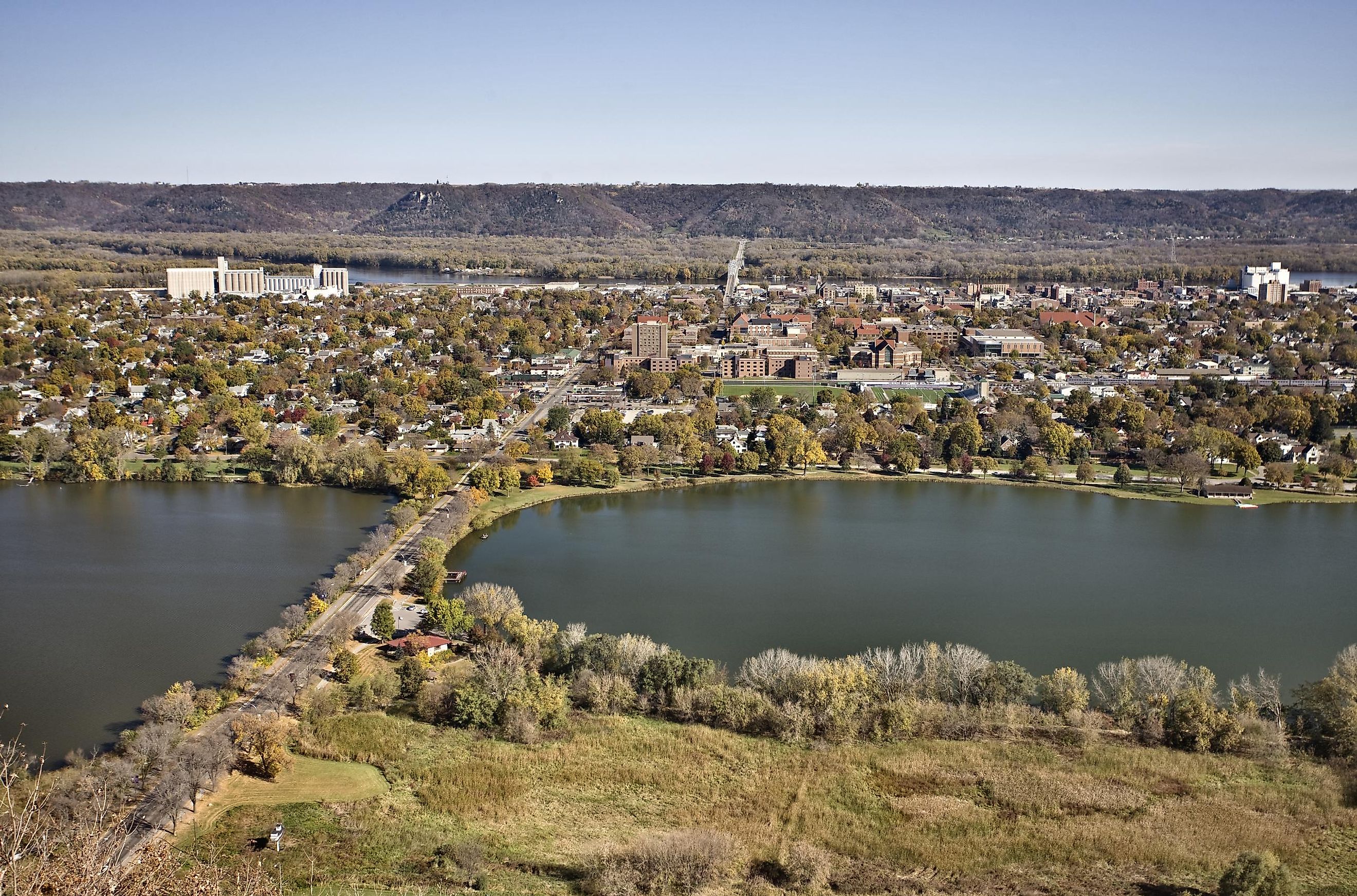
9 Most Beautiful Historic Towns in Minnesota
Minnesota is one of the oldest states in the US, with a lot of history to show for it. Across its towns and villages, traces of its glorious past abound at every turn, ranging from monuments and museums to forts and 19th-century architecture. In these towns, history is preserved and not threatened by civilization. The ambiance in them is also pristine and calm, with a smaller population and welcoming locals. For instance, a town like Morton has just over 400 residents but is big on Civil War history with plenty of landmarks and museums to explore. Such towns are abundantly spread across Minnesota, and here are some of the most historic to visit.
Morton
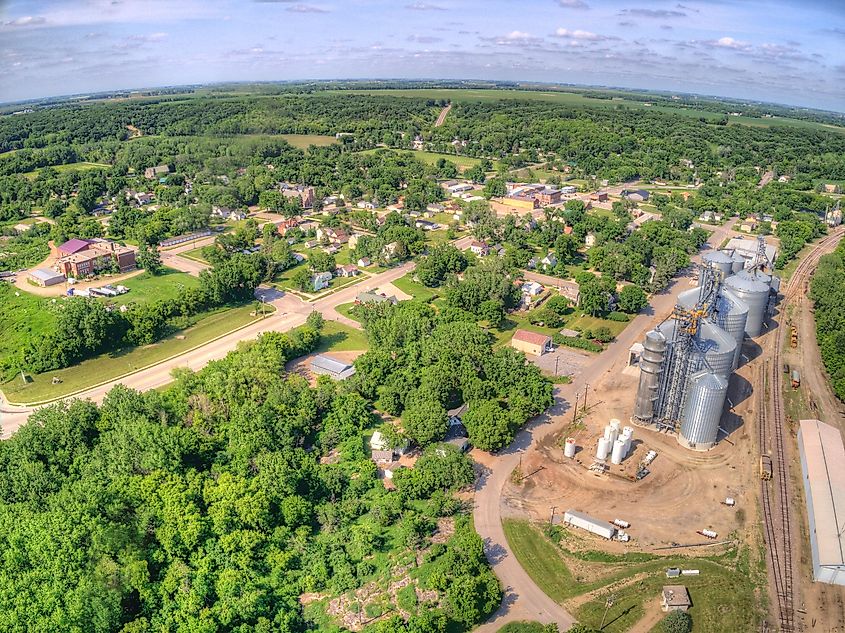
Morton is a small town in Renville County, renowned for the 1862 Battle of Birch Coulee, a part of the 1862 Dakota War, which led to the highest casualties on the side of US forces. Both wars were also part of the American Civil War, an indelible and outstanding narrative in the United States. Thus, Morton is rich in history, and the Birch Coulee Battlefield is a highlight attraction in town to explore. Additionally, the Morton Monuments on a bluff east of the town features two granite obelisks in honor of the combatants of the same battle. For more history of the region, explore the Renville County Museum and Redwood County History Society (Poor Farm Museum). The latter features relics of the county, an 1881 county schoolhouse, and a one-cell jail built in 1865.
Owatonna

Owatonna is a town in Steele County first settled in 1854. This town stands tall when it comes to the history of Minnesota especially as it is home to attractions like the Village of Yesteryear. This historic attraction is a place where visitors can experience life at the start of the 20th century. The village features a depot, two log cabins, a fire station, and a church, among other historic structures that visitors can see on tours.
Owatonna also features another impressive historic attraction known as the Steele County History Center. This center was created in 1949 to preserve the history of the county, and it features many relics and exhibits. In addition, Owatonna was once home to over 10,000 abandoned and abused children between 1886 and 1945 who were housed at the Minnesota State Public School for Neglected Children. This school is now home to the Minnesota State Public School Orphanage Museum.
Hastings
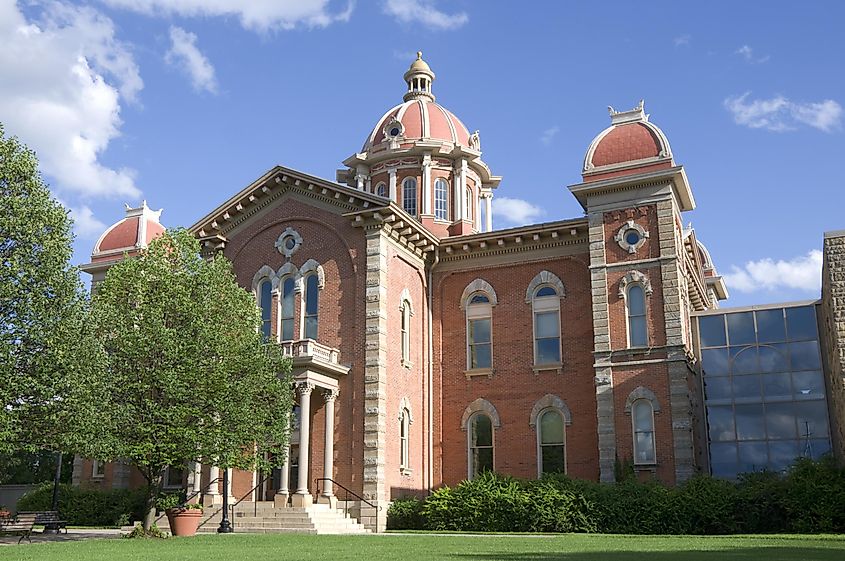
Hastings is a picturesque town by the confluence of St. Croix and Mississippi Rivers with an interesting history dating to the 19th century. The city was named after Henry Hastings, who was the first governor of the state, and it is home to historical attractions like the Hasting City Hall, which was formerly the Dakota County Courthouse. This building was designed in an Italian Villa style by one of the first architects in Minnesota and is the second oldest surviving courthouse in Minnesota.
Hastings is also home to other historic attractions like the William G. LeDuc House which was built by an attorney who represented a party to a suit that involved the Vermillion Falls, which is today one of the most notable attractions in the town. For the ultimate historical tour of this town, take a walk through the East Second Street Commercial Historic District which is home to more than 30 commercial buildings built between 1860 and 1900.
Preston
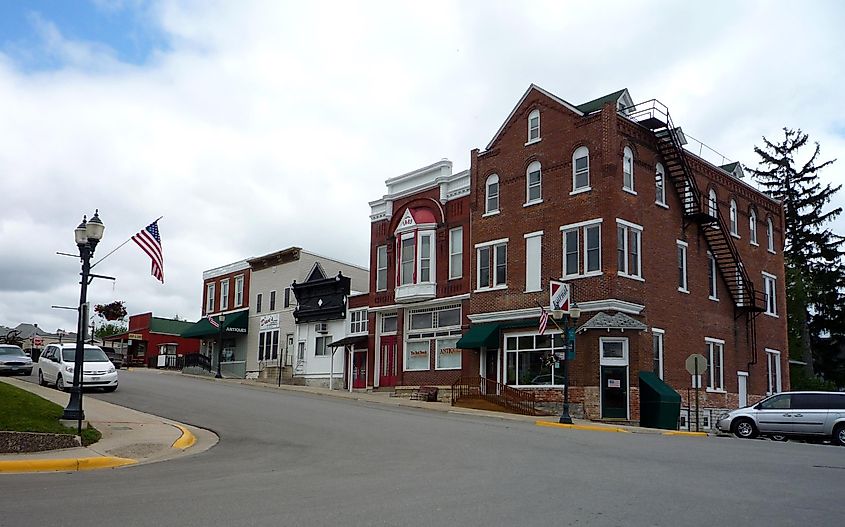
Downtown Preston, Minnesota, USA. By Bobak Ha'Eri, CC BY 3.0, Wikimedia Commons
Preston is an old town founded in 1853 by John Kaercher and named after the town's first postmaster, Luther Preston. The community is particularly historic for housing grain shipments going to the eastern United States via railroad. Today, the 1902 elevator used for the grain shipment is a monument of the town's iconic past and a must-see for every visitor. Away from the grain, Preston is home to the Historic Forestville, which is a revamped village dating back to the 1800s. Here, one can browse through the Meighen Family store to see 19th-century cooking wares, assist with chores in the farmhouses, and exit the village via the historic Carnegie Steel Bridge. Additionally, the Filmore County Museum near Preston houses the most extensive collection of agricultural antiques in southern Minnesota.
Even when visiting for history, it is essential to note that Preston is famous for being the trout capital of Minnesota, so be sure to fish when in this town.
Pipestone
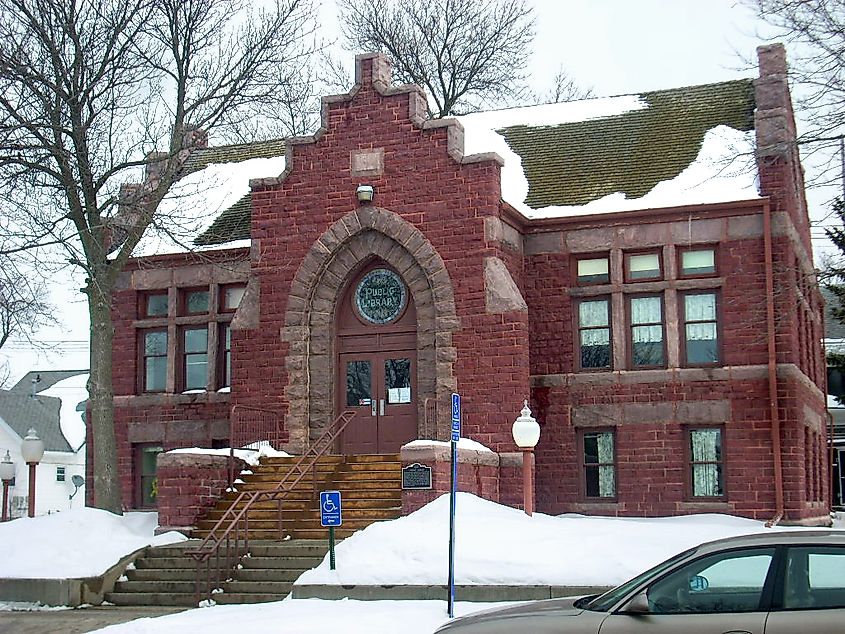
Pipestone Public Library in Pipestone, Minnesota.
Pipestone is one of the oldest founded towns in Minnesota, dating back to 1876, and renowned for the pipestone quarry that gave it early fame. The red stones were used to create pipes by native Americans, and the Pipestone National Monument is an enduring tribute to the long-standing pipe-quarrying tradition of this town. Even the County Courthouse in the town, built in 1899, was made from the local red stone and is on the National Register of Historic Places. Visitors to this town can also check out the Pipestone County Museum, featuring four exhibit galleries that offer a window into the history of the county and its stone heritage. If lodging in the town is a part of the historic tour, the historic Calumet Inn is the best place to lodge as it was built in 1888 with the same stone.
Stillwater

Stillwater is credited as the Birthplace of Minnesota due to the role it played in the creation of the state. In 1848, this town was the location where a territorial convention that would birth the state of Minnesota was held. As a result, Stillwater is loaded with history and is home to attractions like the Minnesota State Prison, which was built in 1853 as the first prison of the territory. Washington County Heritage Center is another historic highlight in this town, where exhibits and artifacts commemorate the lumberjack life and exotic history of St. Croix Valley, which hosts the town of Stillwater. To get the most comprehensive history of this town, visitors can take a self-guided downtown historical tour to see historic sites like the iconic Lift Bridge connecting Minnesota and Wisconsin and the Wardens House, which is the town’s only museum.
Winona
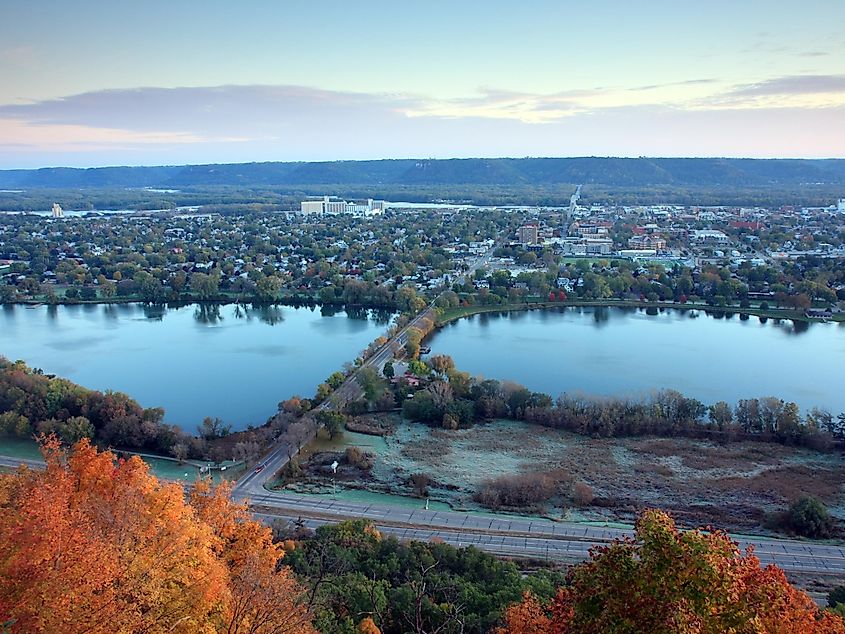
Winona is renowned for the Sugar Loaf landmark, which is a bluff on the Mississippi River, but it also has a fascinating history with lots of attractions to show for it. One of its most famous historic attractions is the Basilica of Saint Stanislaus Kosta - a Romanesque-style church established in 1895 that reflects the town's religious roots. Visitors to Winona will also get to see the 150-year-old Kashubian Cultural Institute and Polish Museum, where one can learn about the town's Polish and Kashubian heritage. For a full-fledged immersion into the historical architecture of Winona, be sure to head to the Commercial Historic District, which is home to six blocks and 65 contributing properties dating back to the 19th century.
Ely
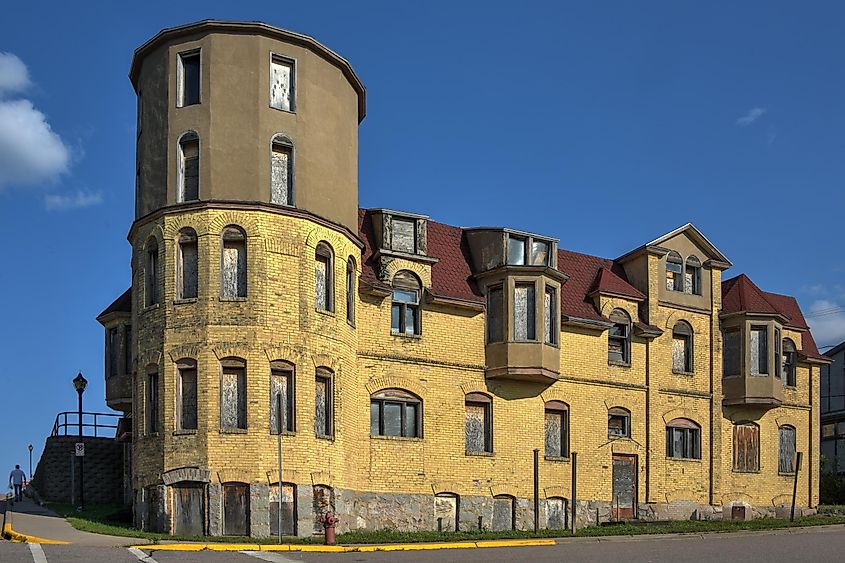
Visitors to Ely will be dazzled by its array of historical landmarks and deep roots as a mining hub. The Pioneer Mine, opened in 1889, reflects much of this town's mining history, even though it was closed in 1967. This mine is now on the National Register of Historic Places and is home to the Ely Arts and Heritage Center, where exhibits and festivals on the town's traditions are held. The town also features the Ely-Winton History Museum, where film shows, exhibits, artifacts, and photographs offer a glimpse into its glorious mining and lodging history. Before leaving town, visitors are advised to experience a unique side of its history at the Dorothy Molter Museum which is a memorial dedicated to Dorothy Molter, a lady who made and sold beer to transiting canoeists near the town. She is also the last resident of the Boundary Waters Canoe Wilderness Area and earned her fame as the "Root Beer Lady."
New Ulm
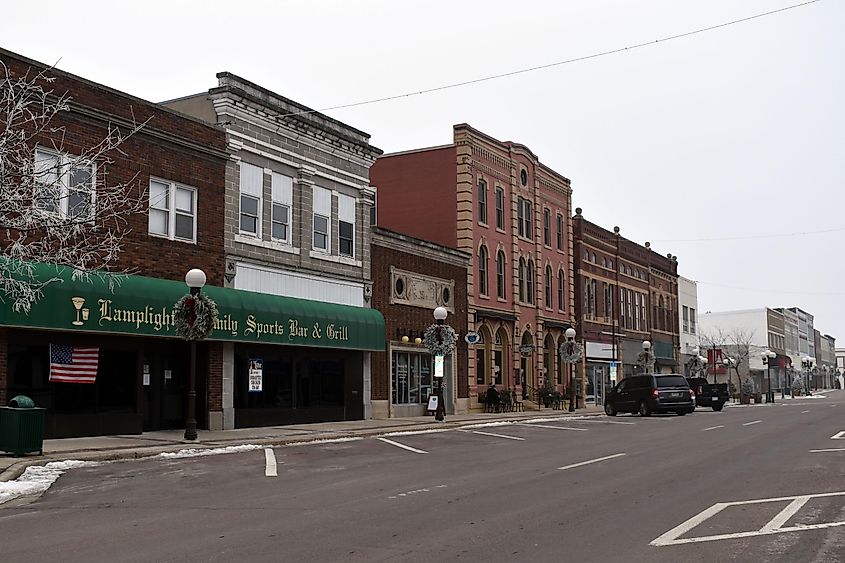
New Ulm, founded in 1854, is a quaint German town soaked in history, with a handful of historic landmarks to explore. This town is home to Turner Hall - one of the oldest bars in the US and the oldest in Minnesota. Built in 1873, the hall features impressive German designs and food, and it has even been listed on the National Register of Historic Places.
As a town rich with German history, New Ulm is also home to the Hermann Heights Monument - a statue that signifies German patriotism. Somewhere in North German Street in New Ulm, the German Bohemia Monument also stands as a symbol of the town's German heritage, paying homage to hundreds of early immigrants from Germany. In addition, New Ulm hosts the Defenders Monument, which honors soldiers who fought during the 1862 Dakota War, and the Minnesota Music Hall of Fame, where music icons across the state are honored.
A Journey Through Minnesota's Historic Towns
While the big cities of Minnesota, like Saint Paul, may have their share of historic districts and monuments, the small towns in this state are also loaded with many things that will transport people back in time to the period before European migrants began pouring into the area. These small towns also come with rustic vibes. From the town of New Ulm, home to the oldest bar in Minnesota, to Stillwater, considered the birthplace of Minnesota, a visit to these towns is like reading through the pages of Minnesota’s rich history.











